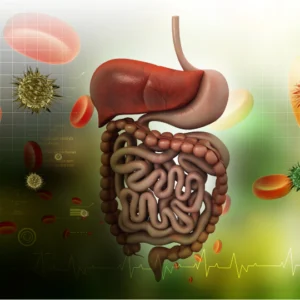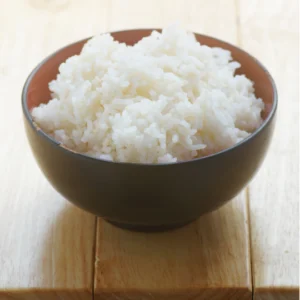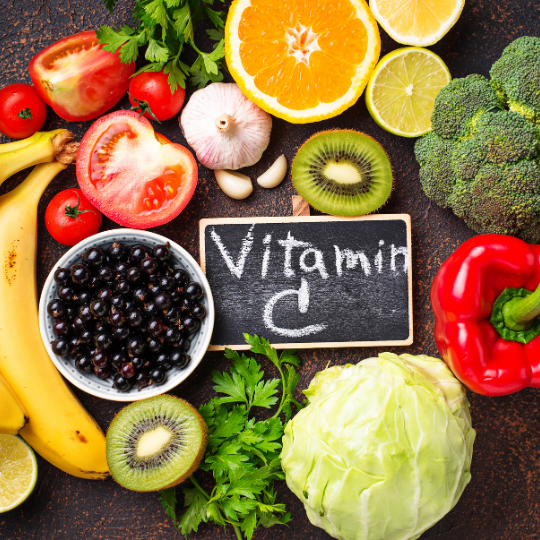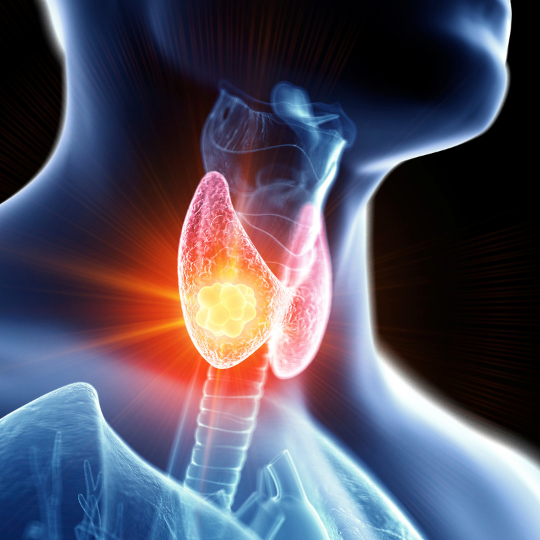While we have previously written on fibre’s link to satiation, we haven’t touched too much on its physiological mechanisms, when talking about all sorts of carbohydrates and saccharides in the Carbs 101 article. Hence the thesis of this article revolving around the connection between fibre and the gut microbiome. In a nutshell, fibre impedes intestinal nutrient absorption so specific nutrients reach the gut microbiome; this grows more diverse, and arguably stronger, providing a host of health benefits. From that ideal state onwards, regular fibre intake is needed to balance co-habitation with the gut microbiome. It is equivalent to sharing ingested nutrients with your gut critters; no one strain gets stronger, potentially taking over, so you end up keep them all diverse and happy 😊. And this provides you, the host, with a host of benefits. Pun intended.

But first, some nomenclature
Dietary fibre is a generic term that refers to ‘carbohydrate-based plant materials that are not digested by endogenous enzymes in the upper GI tract’ (Grundy, M et al, 2016)
Fibre is usually classified as soluble or insoluble polysaccharides, the main difference being the degree of solubility into liquid. In insoluble fibre, component glycan chains are packed tightly together into crystalline assemblies, which gives resistance to solubility and enzymic degradation. Disordered chains of soluble fibre are not as tightly packed, so that soluble fibre interacts more with the internal environment of the consumer. Examples of water-insoluble non-starch polysaccharides (NSPs) include cellulose and chitin, while the water-soluble types include mixed-linkage β-glucans, pectins, galactomannans and also algal polysaccharides such as carrageenan and alginate.
What is important to note is that the water solubility of fibre is based on an in vitro analysis method only and may not reflect the degree of actual solubility in the more complex gut environment.
The eating process
Digestion kinetics depends on food processing, which in turn is impacted by a host of variables, such as the degree of gelatinisation and/or retrogradation of starch, the extent of protein unfolding and aggregation, the size of the emulsion of lipid droplets, and the quality of the lipid–water interface along the GI tract.

It all begins in the mouth, through mastication. Masticated particles of smaller size possess a larger proportion of fractured cells; and when cells fracture, their contents become exposed to digestive fluids. Oppositely, when cells remain intact and separated and continue to encapsulate the contained nutrients, they continue to move towards the colon without being further digested. As an example, mastication of soft tissues, such as the ones in mango, is likely to form particles made of compacted cells that are held together by connective vascular fibres, thus preventing the release of nutrients (carotenoids for example) from the cells.
Digestion of carbs begins with the enzyme α-amylase in mouth; partially digested food then reaches the intestine, where it is further digested via pancreatic enzymes, such as α-amylase, sucrase, maltase, galactose and lactase. Complex non-digestible dietary carbohydrates diets are further digested by microbial carbohydrate-degrading (MCD) activity. Molecules passing through this digestive checkpoint as well, are then excreted via the gut (Kumar, J et al, 2020).
Enter bioavailability
On the basis of nutrient composition information only, nuts provide abundant energy and lipids. However, only a proportion of those lipids may actually be digested and absorbed, the remainder being eventually shared with the gut microbiome.
Bioavailability can also be managed in the kitchen. For example, cooking rice allows for component starch to gelatinize and consequently increases its bioavailability; if one subsequently cools rice for example, component starch becomes retrograded, also known as resistant starch, which has a lower host bioavailability and becomes fuel for your microbiome.

So, the main function of the small intestine is digestion and nutrient absorption, which occurs mostly in the upper portion of the small intestine and namely in the duodenum and jejunum. For this to happen, intestinal enzymes, bile and various electrolytes (particularly Na, Cl, Ca and K) are required. Now, the presence of water-soluble dietary fibre in the digestive tract could minimise the interactions between enzymes and food particles because of the increase in viscosity. For this reason, plant food macronutrients and micronutrients that are not absorbed in the small intestine eventually reach the colon, the main site of water and electrolyte uptake. Together with encapsulating fibre, plant macros and micros become potential substrates for the gut microbiota.
A small detour: bile
Bile acids are synthesised in the liver from cholesterol and are conjugated to a molecule of either glycine (75%) or taurine (25%) to form bile salts; these are stored in the gall bladder and then secreted into the duodenum where they facilitate solubilisation, and thus digestion and absorption of lipids in the GI tract.
Bile acids can be classified into:
- primary: cholic acid (CA) and chenodexoycholic acid (CDCA)
- or secondary, resulting from deconjugation and dihydroxylation of primary bile acids by the gut microbiome: desoxycholic acid (DCA) and litocholic acid (LCA)
The human bile acid pool is roughly 40/40/20% CA/CDCA/DCA (Naumann, S et al, 2020).

During each cycle of the enterohepatic circulation, about 95% of the bile acids are reabsorbed or recovered, depending on their hydrophobicity, which decreases in this order LCA > DCA > CDCA > CA. The 5% of primary bile acids lost, account for about 400 to 800 mg daily and become substrate to microbial transformation into secondary and tertiary bile acids.
Circle complete: back to fibre
Soluble types of dietary fibre, such as β-glucan in oats and guar gum increase bile acids excretion (and consequently decrease plasma cholesterol levels). This happens via an entrapment of the bile salts within the viscous network of the fibres’ polysaccharide chains, thus also preventing secondary and tertiary bile acids microbial transformation. More specifically, viscous polymers of either wheat arabinoxylan or barley mixed linkage β-glucan slow down the passage of bile acid micelles through the endothelial cells back into the enterohepatic circulation; these then pass further down to the colon, where they are further unavailable for microbial transformation and are thus excreted.
What’s interesting is that not only fibre, but also other plant compounds seem to have similar effects. Epigallocatechin-3-gallate (EGCG), present in high quantities in green tea, increases both the diameter of bile acid micelles and consequently faecal bile acid excretion.
Shinning in the dark: SCFAs
Now, it is known that the diversity of the gut microbiota is directly related to the amount of fermentable dietary fibres reaching the colon. This happens as fibre fermentation yields short-chain fatty acids (SCFAs) in the following ratios:
- acetate (60%)
- propionate (25%)
- butyrate (15%),
plus minute amounts of methane (CH4) and carbon dioxide (CO2) gases, as well as formate and lactate.

The main roles of SCFAs are to activate and modulate various physiological functions in the gut including providing energy to colonocytes, maintaining their mobility and blood flow, and regularizing the movements of electrolytes and nutrients within the lumen. Moreover, there are specific roles of particular SCFAs, as follows:
- propionate and acetate increased the expression of leptin, a potent anorexic hormone, in adipocytes, thus controlling satiety
- furthermore, an enhanced ratio of butyrate in the SCFAs pool releases more PYY (peptide tyrosine-tyrosine) and GLP-1 (glucagon-like peptide 1), both of which inhibit appetite, delay gastric emptying and influence insulin secretion & sensitivity
- butyrate-mediated HDAC (histone de-acetylase) inhibition acts as an anti-inflammatory immune response by decreased production of inflammatory cytokines IL-8, IL-6, TNFα and Nf-kB
- energy provision-wise, whereas acetate and butyrate are lipogenic, propionate is glucogenic; PPARgamma is one of the genes mediating these effects.
So, in a nutshell, a fibre rich diet, reallocates part of nutrients to your gut tenants, which in exchange flourish and provide you with SCFAs in exchange; these further help with a healthy metabolism and a balanced immune system. Fibre is thus essential to tie in a durable relationship with your gut microbiome.
Need fibre-management help? Give us a shout.













